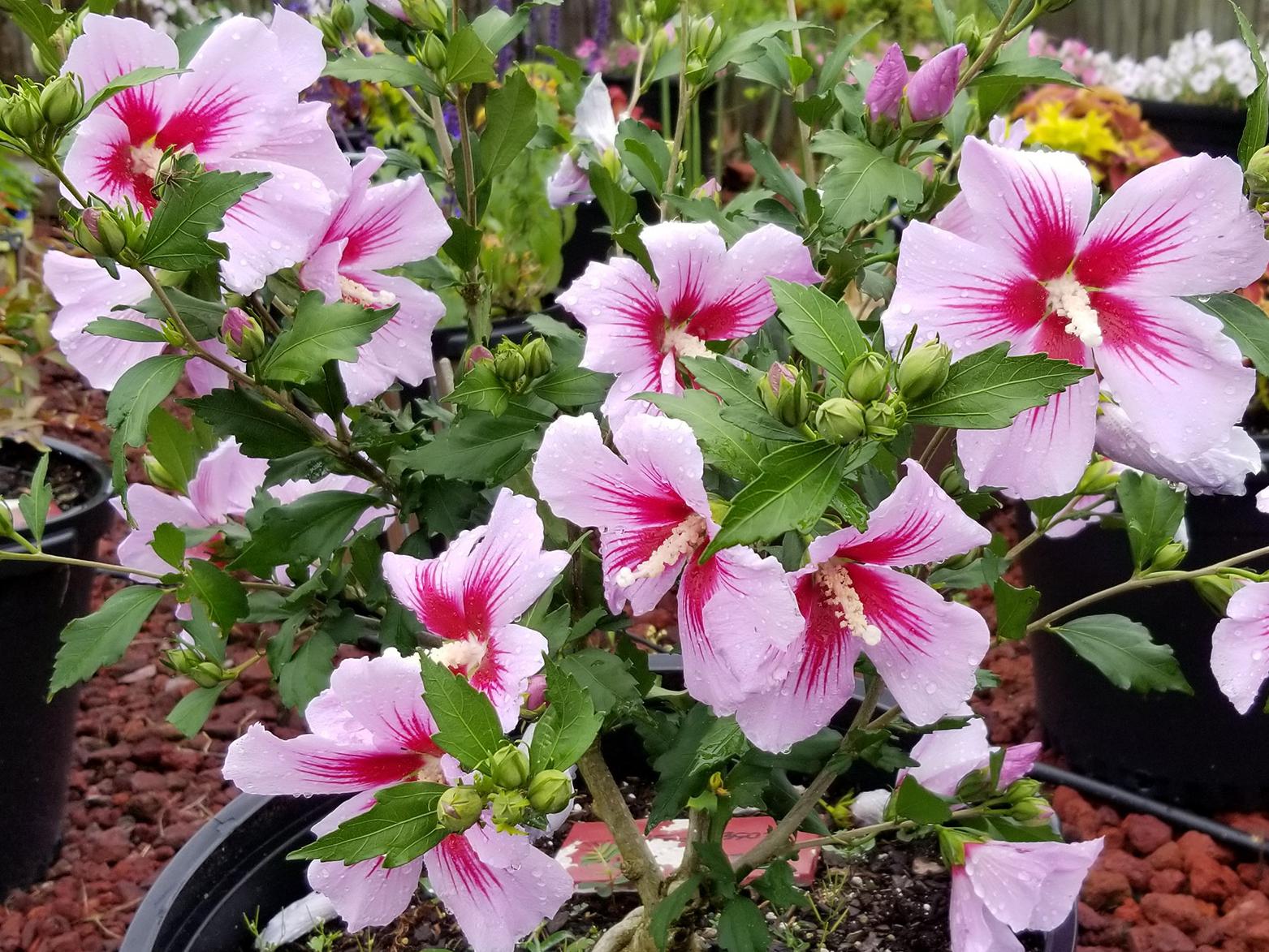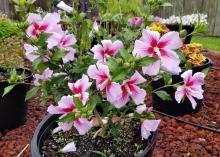Information Possibly Outdated
The information presented on this page was originally released on May 20, 2019. It may not be outdated, but please search our site for more current information. If you plan to quote or reference this information in a publication, please check with the Extension specialist or author before proceeding.
Rose of Sharon has high growth potential
One of the plant groups I love to grow in my home landscape is the hibiscus. To that end, I’m going to dedicate the next several columns to different options of these beautiful flowering shrubs that are available for the home gardener.
This week’s hibiscus is an old favorite and has been a mainstay in Southern landscapes for a very long time. Contrary to its name, the rose of Sharon is not a rose at all, but a hibiscus known botanically as Hibiscus syriacus.
The obvious reason why home gardeners love this plant is all about the flowers. Rose of Sharon is deciduous, so in the spring the plants start to push new growth, followed by the flowers.
These blooms are eye-catching. Each flower has five petals, and the blooms are 3 or more inches in diameter. A main feature is the prominent column of stamens and pistils. Colors range in shades of pink, red, rose, white and violet. Many have an attractive, contrasting, dark-red eye. After the initial flush, these plants bloom intermittently through the summer into the fall.
Rose of Sharon, especially the older selections, can be large shrubs or small trees -- wide and tall. Because they’re generally purchased as small plants in small containers by unsuspecting gardeners who expect them to remain that size, it’s not uncommon to see these plants overgrown and covering windows, doors and/or other landscape plants.
These plants are tolerant of rather severe pruning and can be kept at an appropriate size when planted in the wrong spot. But that’s really the wrong mentality to have; just look at the upsurge of crape myrtlation each year.
So, considering this growth potential, it’s a good thing that plant breeders are working on selecting plants with other, more desirable growth characteristics.
Over the past several years, I’ve had the chance to grow some of the newer selections. One that I’m really impressed with is named Orchid Satin. This selection is the first to bloom in my landscape and has large, beautiful single orchid-pink blooms with dramatic red eye accents. This plant has a graceful, almost arching branching habit that is absolutely loaded with flowers this spring. Orchid Satin could reach up to 10 feet tall and 6 feet wide. I’m planning on letting it do its thing.
I’ve wanted to place nice flowering shrubs on either side of my front door, but choices have been limited because the space is narrow -- until now. I have two great rose of Sharon selections in place, Purple Pillar and White Pillar. These plants will grow up to 10 feet tall, but only 3 feet wide. The branching habit is tight and covered with bright, semidouble purple and white flowers.
I’ve been growing dwarfish flowering shrubs and have a fantastic rose of Sharon selection called Pollypetite, which grows only 3 to 4 feet tall and wide.
Remember: The term dwarf is always about perspective. This plant has large, lavender-pink flowers contrasted by dark-green foliage.
Next week, we’ll continue this series and take a look at the colorful Cajun hibiscus.




